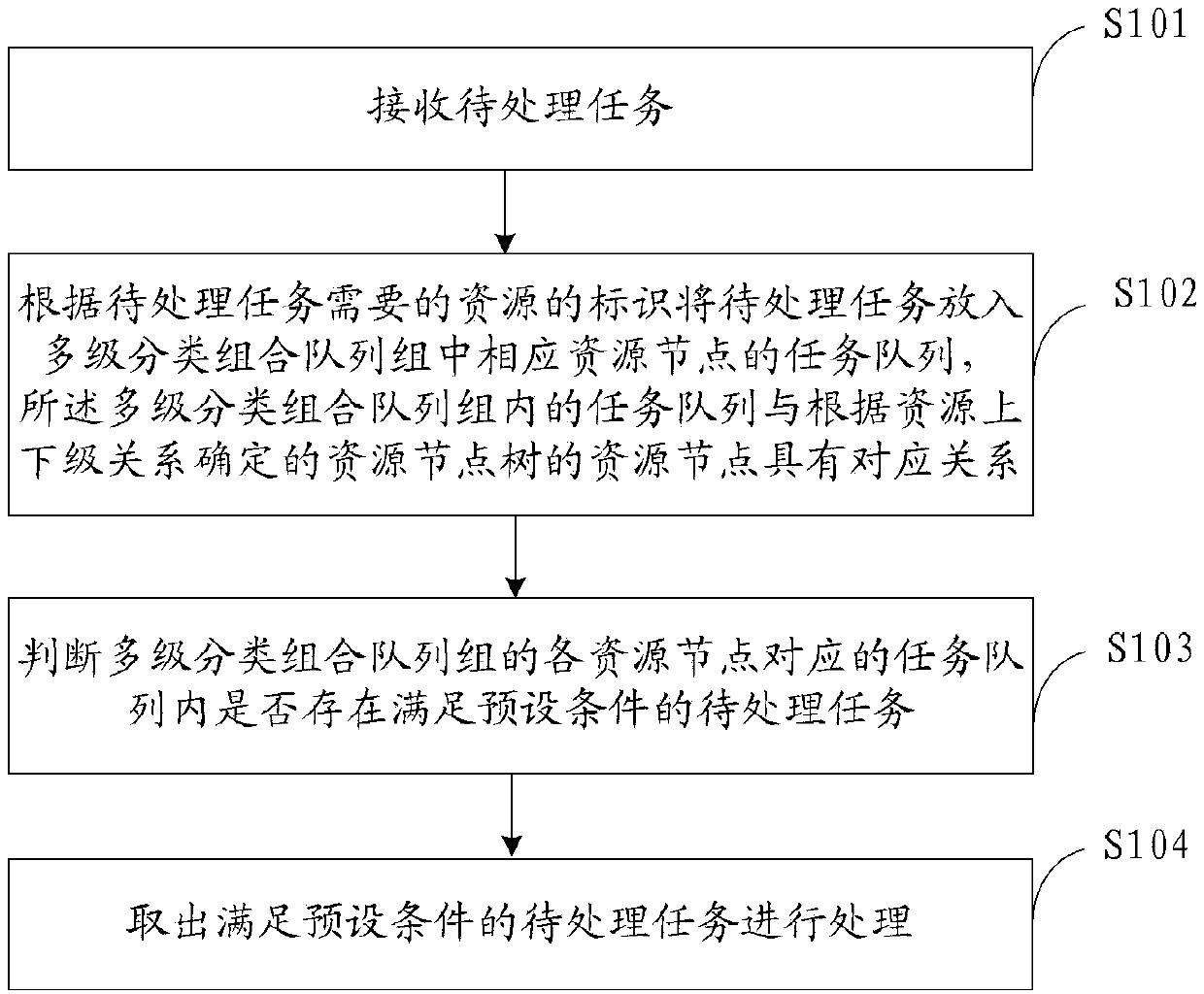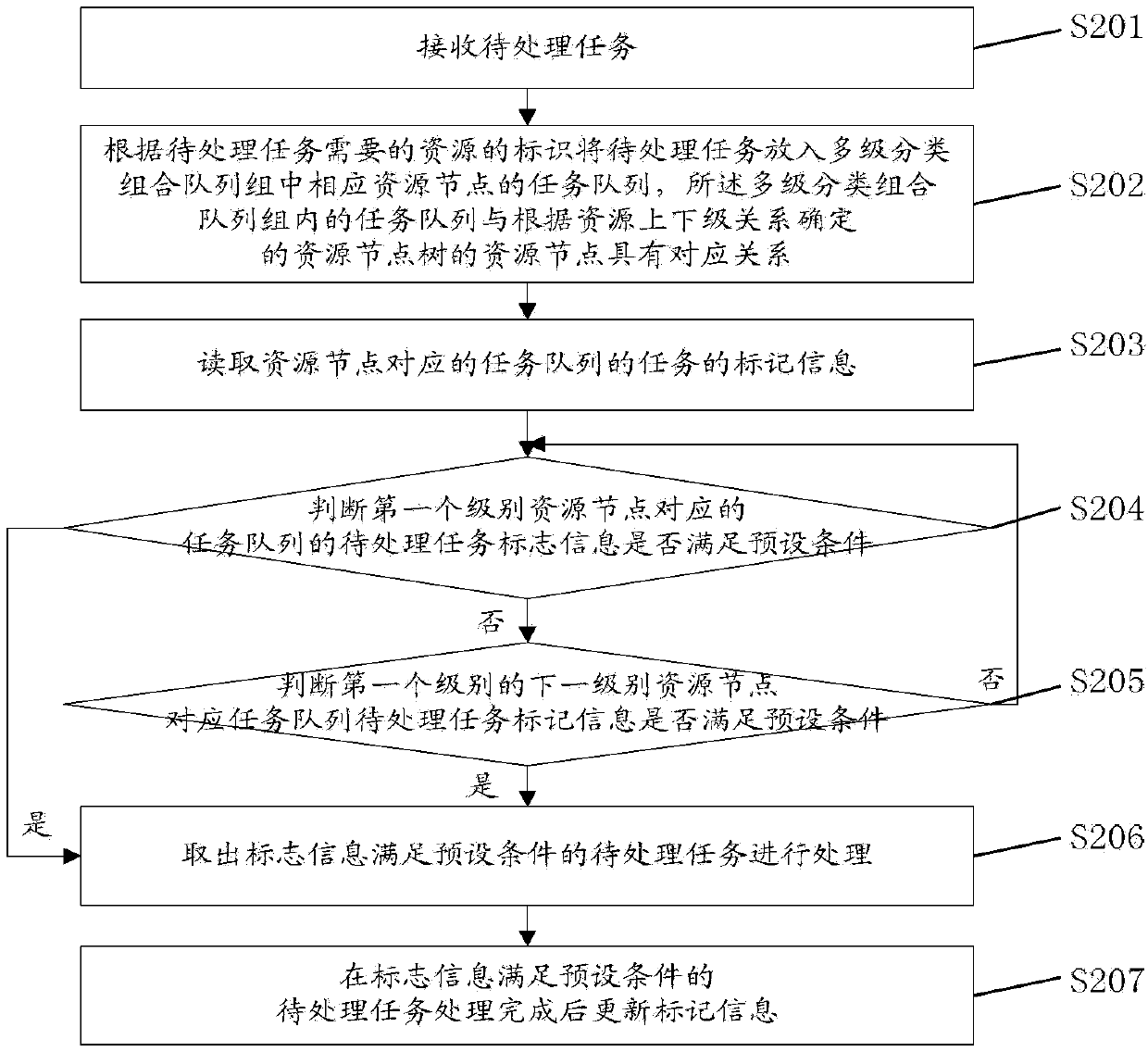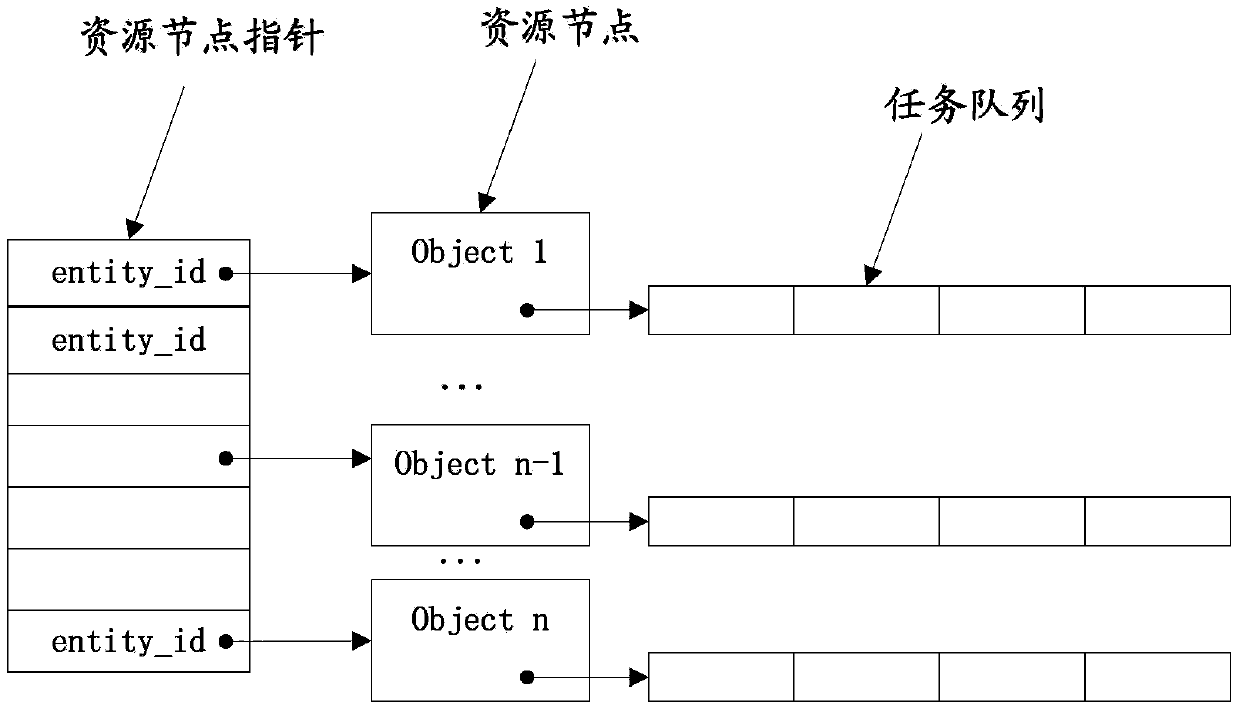Task processing method and device based on shared resources
A technology for sharing resources and processing methods, applied in the field of task processing methods and corresponding devices, which can solve problems such as complex mutex operations, affecting task execution efficiency, and reducing system task throughput, so as to improve processing efficiency and improve task performance. The effect of throughput
- Summary
- Abstract
- Description
- Claims
- Application Information
AI Technical Summary
Problems solved by technology
Method used
Image
Examples
Embodiment 1
[0039] see figure 1 , which shows a flowchart of a method for processing tasks based on shared resources. This example includes:
[0040] Step S101: receiving tasks to be processed;
[0041]Tasks to be processed are tasks that need to use various types of resources provided by the computer system to perform corresponding operations. This task can be manifested in many specific forms, such as computing tasks, tasks of installing software programs, tasks of writing data to memory, configuring network tasks and so on. Since the total amount of resources is relatively scarce relative to the total amount of tasks, multiple pending tasks need to share (share) one or more resources. That is to say, a single task may need to call multiple resources to complete task processing, and multiple tasks may also need to call the same resource to complete task processing. The task to be processed in this embodiment is a task based on shared resources, and the task may require one resource ...
Embodiment 2
[0052] The foregoing embodiments mention searching for pending tasks that meet the preset conditions in the multi-level classification and combination queue group. Although the embodiment of the present application does not need to limit the method and preset conditions for searching the multi-level classification and combination queue group, it can also realize the present application. purpose of the invention. However, choosing an appropriate way of inspecting tasks in the task queue in the multi-level classification combination queue group and setting appropriate preset conditions will greatly improve the processing efficiency of pending tasks and improve the task throughput rate of the system. In this embodiment, the search for tasks satisfying the preset condition is performed according to the hierarchical relationship of the resource node tree, and the preset condition is set to be judged by means of flag bits. In order to illustrate the technical solution of this embodi...
Embodiment 3
[0068] The foregoing descriptions are descriptions of the method embodiments of the present application, and correspondingly, the embodiments of the present application also provide a task processing device based on shared resources. see Figure 5 , which shows the structural framework of the processing device for sharing resource tasks according to Embodiment 3 of the present application. This device embodiment 500 includes: a receiving unit 501, a first putting unit 502, a judging unit 503 and a processing unit 504, wherein:
PUM
 Login to View More
Login to View More Abstract
Description
Claims
Application Information
 Login to View More
Login to View More - R&D
- Intellectual Property
- Life Sciences
- Materials
- Tech Scout
- Unparalleled Data Quality
- Higher Quality Content
- 60% Fewer Hallucinations
Browse by: Latest US Patents, China's latest patents, Technical Efficacy Thesaurus, Application Domain, Technology Topic, Popular Technical Reports.
© 2025 PatSnap. All rights reserved.Legal|Privacy policy|Modern Slavery Act Transparency Statement|Sitemap|About US| Contact US: help@patsnap.com



